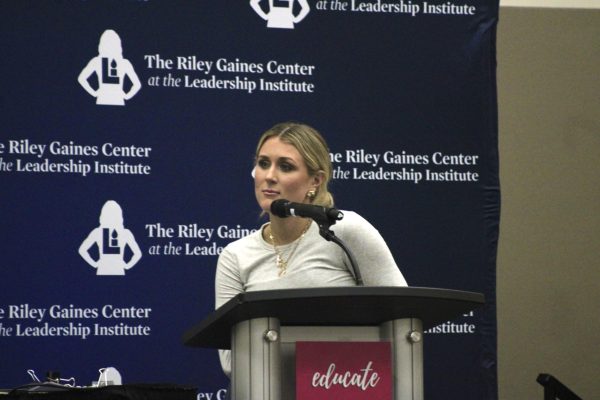Breaking through the STEM stereotypes
Through volunteering and other outreach programs, professor Laura Dinsmoor is trying to get more women into STEM-related programs at the university level.
In a field that is mostly dominated by males, it has become a nationwide issue that not enough women are involved in STEM (science, technology, engineering and math) related careers. This means that the answers to climate change, biomedical issues and the cure for cancer are going to come from the minds of current and future STEM students.
Professor Dinsmoor is one of the professors molding the young minds of STEM students. She graduated Oakland University in 1980 with a degree in computer engineering.
After college she worked for General Electric for a short time before she went to FANUC Robotics in 1984. She started out as a software developer in 1984 and found a passion for writing programs.
She stayed with the company until 2000, which is when she realized that she could not be a mother and a software developer so she decided to leave FANUC and become a professor at her alma mater.
“I thought that being a professor at Oakland was just going to be a time killer until I figured out what I wanted to do next, but I fell in love with teaching and working with these young, brilliant minds,” Dinsmoor said.
When she came back to Oakland, Dinsmoor thought that there was surely going to be more female students in her classes than when she was taking engineering classes in the late 1970s. She was shocked to find that the amount of women in STEM classes has not changed as drastically as she hoped it would.
Women in STEM
There is a lot of data that shows that not enough women are interested in STEM, which is why Dinsmoor, along with many other Oakland professors, are trying to raise the interest level.
“We have a stereotype that shows girls that if there is a woman programmer she is a total nerd and she is not necessarily pretty,” Dinsmoor said. “I’m trying to reach younger girls because we want them to realize that they can do this and that this is a fun, creative career.”
Dinsmoor’s efforts include going to local high schools and speaking to them about STEM, volunteering at coding events and judging local robotics competitions. She says that even though she hopes her efforts are helping influence girls to get interested in STEM, it’s female STEM college students that should go out and help with the cause.
“[Younger students] don’t usually listen to adults, but if a college lady walked in there they tend to listen to them. So go out and be mentors, volunteer and call your old high school,” Dinsmoor said. “I encourage people in STEM to go out and talk to younger kids.”
Raising the retention rates
While Dinsmoor’s efforts mostly focus on out of school recruitment, there are a lot of ways that Oakland STEM faculty members are trying to retain female students in their program.
Professor Kathleen Moore helped Oakland secure a grant from the National Science Advanced Program that helps colleges with women in STEM faculties. She spoke about how the grant is helping them recruit and promote women into the STEM programs, while also teaching professors how to retain them throughout their college career.
“At the college level the students, typically women, who may start out in the STEM fields, somehow don’t persist as much as they should,” Moore said. “One of the feelings is that if they can see faculty that is diverse and show women who have been successful that will encourage more women to stay in the field.”
With the country (and the world) facing numerous issues related to the STEM field, it is important to promote and keep the best and brightest minds within those fields. There is evidence that a lot of capable women stray away from the STEM fields due to stereotypes, but with the efforts of Professor Dinsmoor and others at Oakland, hopefully those stereotypes start to fade away.











